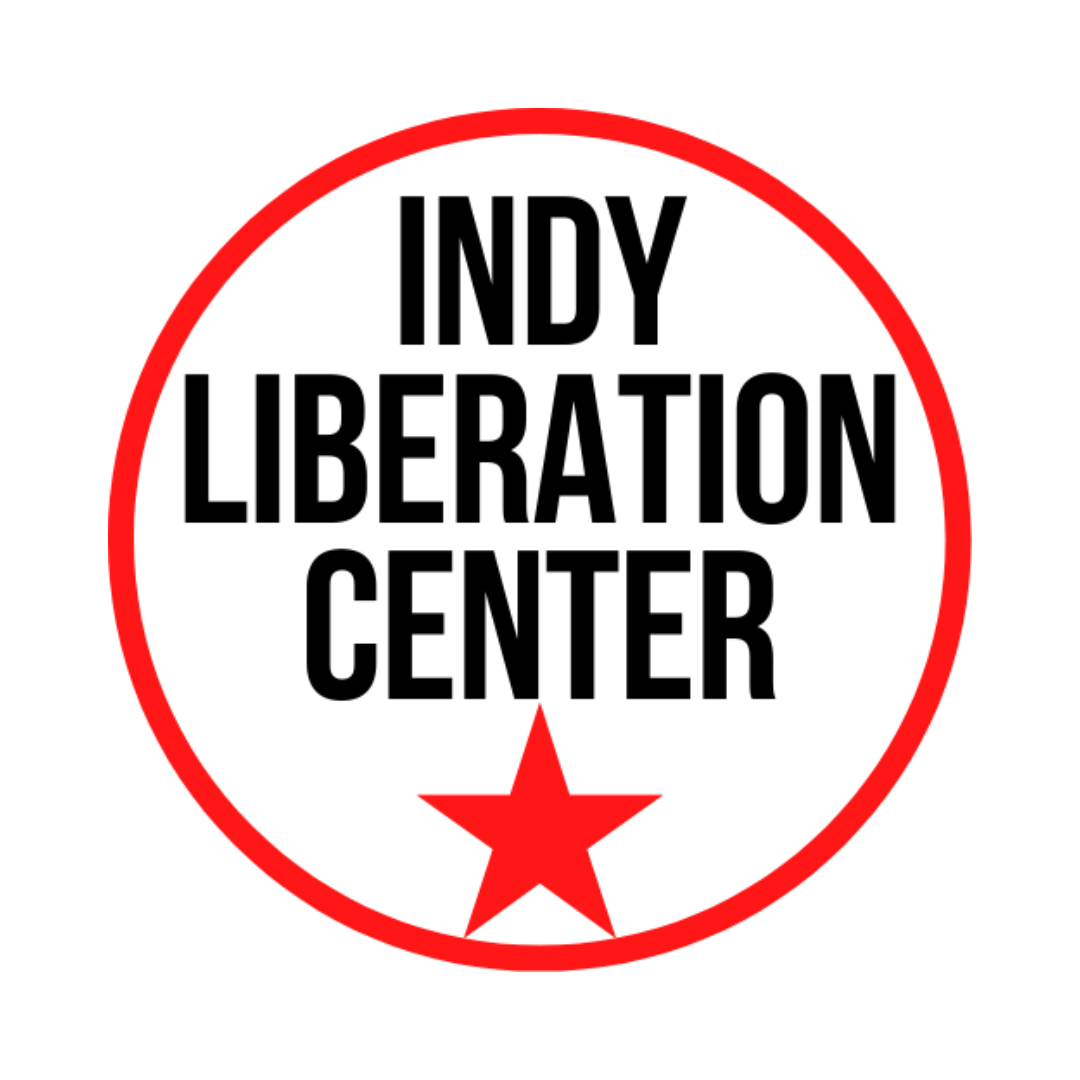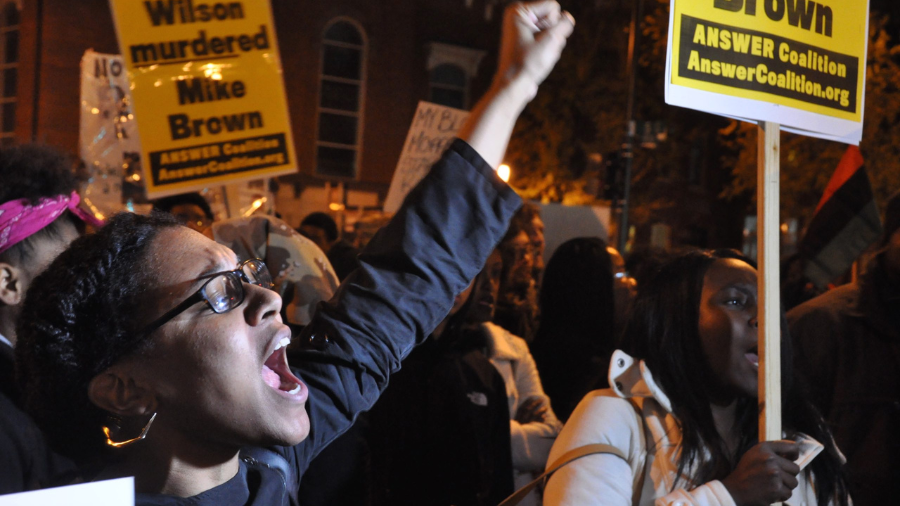This article was first published by Liberation News on August 12, 2024.
Ten years ago today, Ferguson, Missouri erupted in a spontaneous mass movement after 18-year-old Mike Brown was executed by police officer Darren Wilson. For hundreds of days, a sustained protest movement against racism engulfed not only Ferguson, but cities across the entire country, demanding justice for Brown and all victims of police brutality.
This righteous era ignited a movement for Black lives that in many ways reflected a resurgence of the generations-long fight for Black liberation that preceded it. And still, the lessons learned in the struggle that ensued in Ferguson—between the people, police, politicians, and nonprofits set on co-opting and smashing the righteous anger of the movement—shaped the way the Black liberation movement has developed over the last decade.
For organizers today interested in advancing the struggle against police brutality and for Black liberation, it is necessary to reflect on the lessons that came out of Ferguson to inform our fights ahead.
From Ferguson to Minneapolis—and beyond
Brown was unarmed and walking to his grandmother’s house when police accosted and murdered him. According to witnesses, his hands were up when he was shot seven times.
Rather than the extreme violence enacted on an unarmed young man by the police, the justifiable anger of the protest movement that followed became the center of the corporate media’s narrative of Ferguson. Article after article focused on scenes of protestors looting or destroying property, instead of the fact that another young Black man was murdered at the hands of the police.
Following the non-indictment of police officer Wilson, the people of Ferguson—told by authorities they could “peaceably assemble”—were immediately confronted by an army of heavily armed and aggressive riot cops. Still, the rebellion pressed on, the largely youth protestors determined to keep fighting. When the National Guard arrived, the rebellion continued; when the National Guard left, it still continued. When a curfew was imposed, the community marched on, regardless of the time.
The recurrent violence from the state against the people failed to make headlines, though. Yet, the “violence” from protestors was continually condemned by not just the media, but liberal politicians and nonprofits calling for “peace” and seeking to tell people how to protest. Meanwhile, their “movements for change” didn’t involve protest at all—just the very mechanisms designed by the system to absorb and disregard democratic debate and discussion.
So on one end, the people of Ferguson demanding justice for Brown were vilified; and on the other, they had their voices stolen and co-opted by the Democratic Party and its operatives that, time and time again, have sought to stifle the potential of any movement for drastic change.
In 2020, when the nation again erupted in flames as hundreds of thousands of young people took to the streets to demand justice for George Floyd, murdered on video by Minneapolis police officer Derek Chauvin, the same narratives that assaulted the character of Floyd and the movement, while repainting the image of the killer cop emerged in the corporate media. Again, protestors were publicly ostracized for their choices on how to protest, despite the fact that a war of violent state repression was declared on the movement and playing out in the streets every day.
Where the stories diverged, however, was largely rooted in the level of militancy, consciousness, and organization that people came to the streets with as a result of the lessons learned in prior uprisings and the general context of the moment. At the time George Floyd was murdered, the COVID-19 pandemic was raging with no relief in sight, and millions were out of jobs as the economy collapsed. Not only did protestors seek to condemn the institution of racist policing, but the entire systems of white supremacy and capitalism that make racist policing possible. And of course, this instilled a level of fear in the ruling class that, perhaps, didn’t exist before.
The reality is that the heroic acts of self-defense carried out night after night by the youth of Ferguson both stunned and terrified the system—and prepared it for how to fight against the next uprising that would occur in 2020. While Donald Trump’s fascistic use of the military was an attempt to physically repress the uprising against racism, the ruling class had to turn to other tactics to stifle the movement as well.
While the anti-racist movement in 2020 didn’t extend quite as long as that of the Ferguson uprising in 2014, it wasn’t because people grew tired of taking to the streets. It’s because the political establishment was fearful of what could be possible this time around with the size, power and fearlessness of the people. What had previously been thought to be impossible, suddenly became possible—widespread demands of “abolish the police” were met with pledges to dissolve police departments, or the reduction of local police budgets altogether. These “wins” weren’t granted because the ruling class was feeling generous and agreed with the demands of the people—it’s because they wanted to do everything they could to stop the people in their tracks.
As time has gone on, the establishment has adapted the ways in which it responds to righteous protest. Not only has the use of heavily armed elements of repression continued, but other tactics that attempt to posit the establishment as a “friend” of the movement have intensified. Remember when riot police took a knee with fists in the air, and Democratic politicians kneeled in kente cloth? These new attempts to stifle our movements cannot fool us.
From rebellion to revolution
The reality is, under a capitalist system built on white supremacy, Mike Brown and George Floyd happen everyday; police brutality is waged against poor and oppressed people everyday; police get off with impunity for their crimes against the people everyday. Ten years later, even with the introduction of reforms like body cameras and “sensitivity” trainings that were offered as concessions in response to past movements, this system maintains its violent brutality against us. How?
The state is highly organized and centralized—its ability to deploy military tactics and respond to people’s uprisings has only developed over time. And with adapted techniques to kill a movement, the Democratic Party and the establishment believe that they’re one step ahead of us. But we can’t forget the long history of co-optation that these so-called “progressive” politicians have engaged in. In a capitalist system, marked by growing inequality and worsening conditions for the vast majority of us, those in power will continue to do whatever they can to maintain power—and today, that includes pretending to be a friend to our movements when, in fact, they are the real enemy.
Now is not the time to throw up our hands, take the crumbs that they offer us and stop fighting back. The task of the moment is to fight back with increasing levels of organization and coordination. The police are able to kill with impunity because they are an arm of the very system we’re fighting against. It’s not enough to say “abolish the police,” when the whole damn system is guilty as hell. We need to tear it down entirely and build something new.
This Black August and beyond, we must continue to learn from the struggles that came before us in order to fight ahead. It’s true that the uprising against racism in 2020 took lessons from the Ferguson uprising in 2014. Now we must continue that trajectory in learning how to fight more effectively and differentiate friend from foe so that we are prepared for the next moment that inevitably will come.
Featured image: A 2014 protest in Washington, D.C. after the killing of Mike Brown. Credit: Flickr/Neil Cooler (CC BY 2.0)

